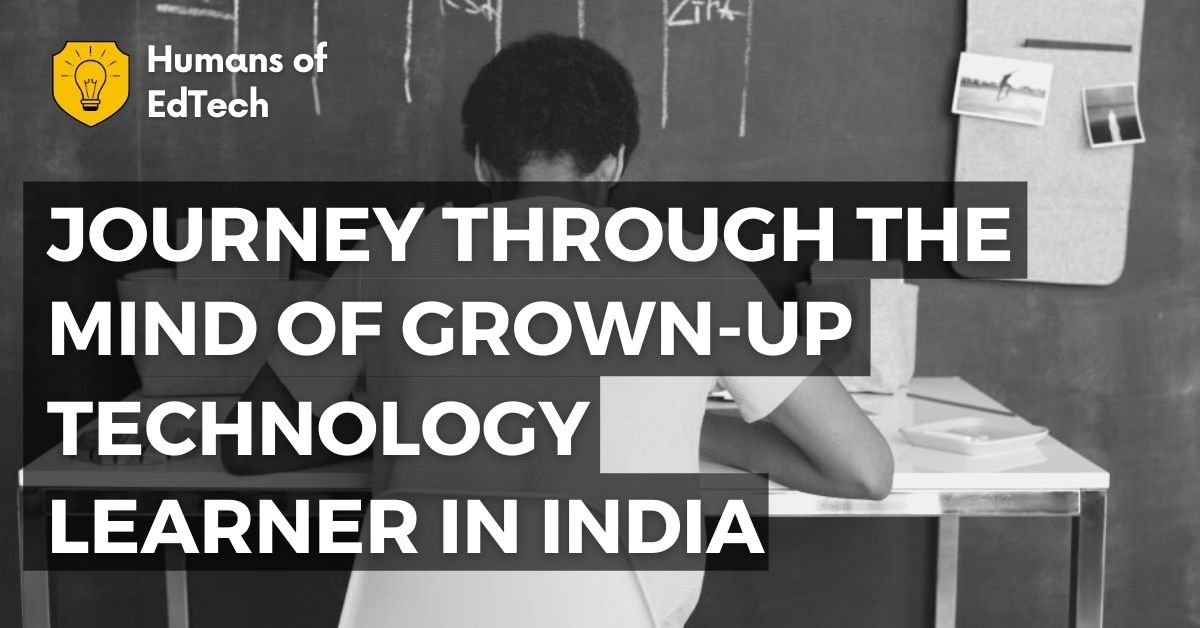We drove around the SF – Bay Area for 5 days clocking 1300 miles and 33 meetings with CEOs and CMOs. Classic customer validation in the tech capital of the world.
We generally see the bright side of customer validation. People got some godly insight and came up with a killer product. We did the same in Summer of 2016. We got some superb insights. We had a product – But decided against taking the concept forward. Was it a good decision? Read on to discover more and tell us.
- Words:1128 (Skim friendly)
- Type: Post
- Video:0
- Slides: 0
- Topic: Humans Of EdTech
- TIME: 6 Minute

So let’s look at what was the product. And what were the origins of the product. So the product was straightforward we had over here.
So the product was something what we called as ‘9Content’. This stemmed from our previous experience of running Customer360, and Customer360 with good content marketing. And what we mean by that is we wrote a tonne of blog. We made freelancers write a tonne of blogs, and posted them on Quora, we posted them on multiple other social sites. And we could do some serious lead generation because of that. This translated into a very strong top line and also resulted in extremely high recall value from a brand perspective. And for the valuation and the perception from a venture capital perspective, it also resulted in some really serious thumbs up. So what we had done regarding content marketing, at Customer360, can we productize that?
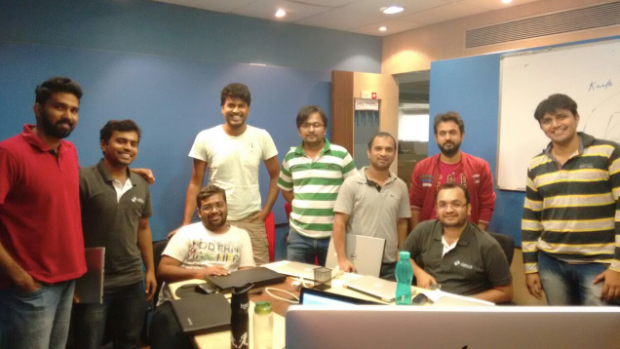
Now, that was the thought process with which we started out with the key problem statement. Marketers have very serious difficulty being able to visualise what is the ROI? What is the impact that content marketing is going to have? Now, can we solve that, and we believe that marketing is an increasingly quantitative discipline where it needs to be very interdisciplinary to begin with. And if you can quantify the impact of the content that we can create, if you’re able to build many adjacent offerings, starting from recommendations, time of posting, measuring the ROI, having the next best content, what kind of content needs to go out. If you can have a virtual Chief Content Officer. And that’s essentially what we thought. Now we had a fair understanding of how some of these Indian B2B businesses work. And what is the capacity and the propensity to pay and what deals typically get struck even at Salesforce or Oracle, or any other enterprise grade deals. So we believe the national market for some products that we’re trying to build is outside of India, and United States being one location for it. Now, a lot of these tech companies are based in the West Coast, and the East Coast, and some other tech hubs in and around the US.
We had our travel scheduled for office work. Along with that, we loved a good one week in San Francisco, where we could showcase the product that we are building, thinking through and have it validated. Now let’s look at what all did we prepare?
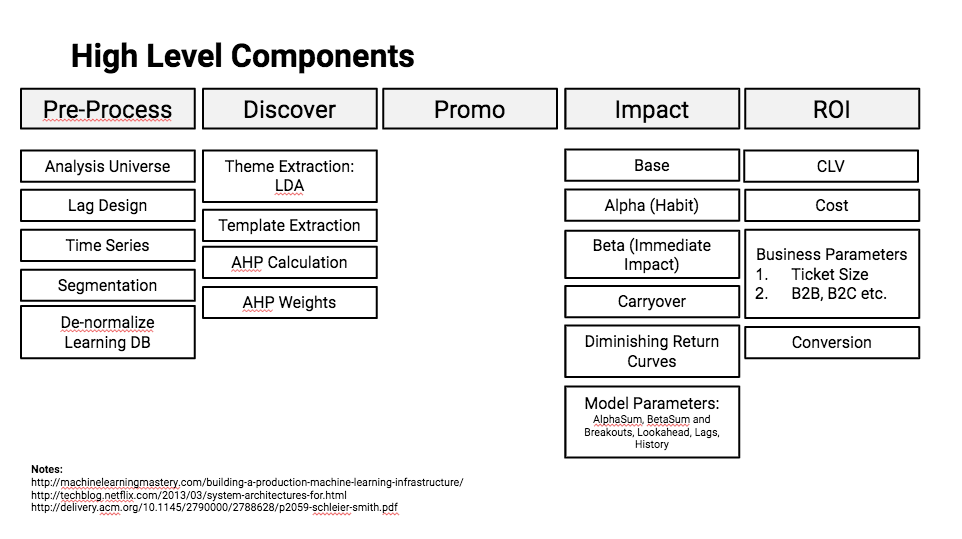
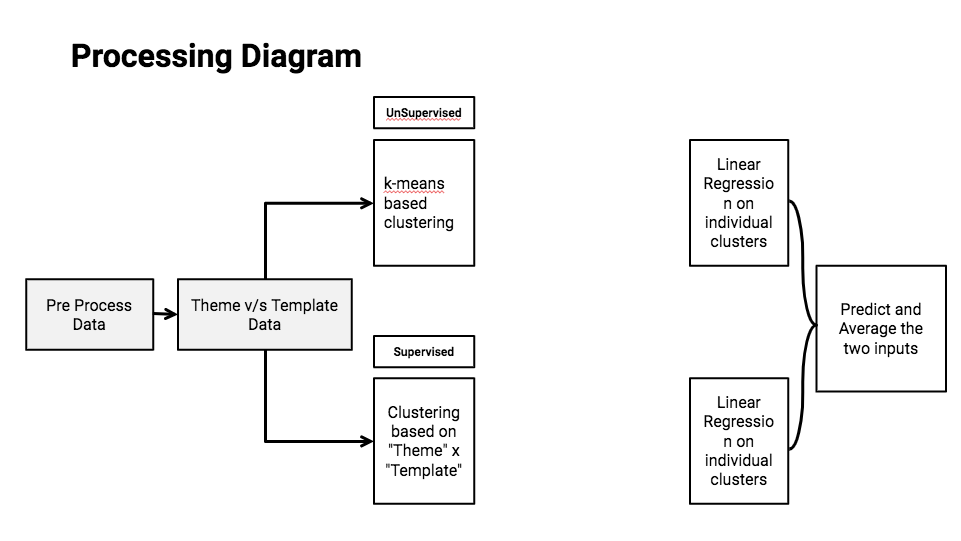
Website: The number one thing that you prepared is a website. And on the website, we did explicit efforts to communicate what was our core value prop? So let me just quickly help you understand what was our core value, prop? And how did we go about communicating the same? So essentially, it was data sciences driven content marketing, and, you know, things in that thing. So you bring together computational linguistics, editorial, excellence, end to end executions, it’s a breakthrough product for all the marketers. And that is how we kind of, you know, took it forward. And we put together some serious thought leadership literature, where, you know, data is the one that will help you survive, thrive, grow, and many things. So I think we have a document that is ready over here and we copy pasting a lot of things from here. On to the blog post. So we put together a very strong site for this thing.
Hi-Fidelity Clickable Prototype: The next thing that we did is we put together a mock up. And this mock up was nothing but bootstrap based mock up. We had built out the mocks in Marvel app. We put together the high fidelity mock ups. And in the bootstrap based thing, we put together the clickable mock up HTML mock up for this site. So we have a few screen grabs of them. And that’s the thing.
Mathematical Model in Excel: The third thing that we built together with essentially a threadbare model of what and how to quantify the impact of some of these channels. And it was essentially a lot of mathematical modelling in Excel. And this we could present to people. It was very quantitative, but we can at least explain to people what is it that this thing can give you out as an insight.


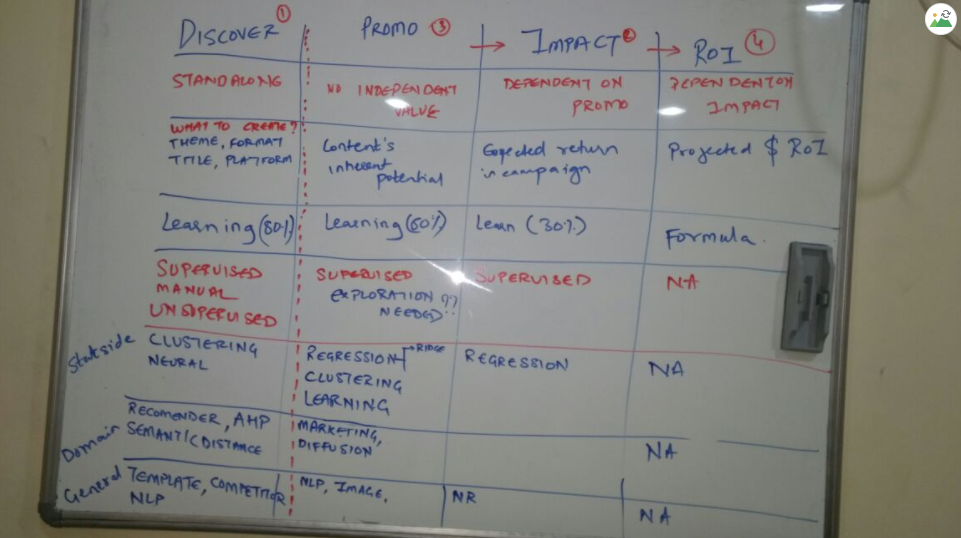
Architecture Diagram: The fourth thing that we had was a high level architecture diagram regarding how do we intend to build the whole thing out from the flow of data prospective collection of data perspective. And we actually built out a mock for this, where we actually scraped for data from some sites, did the cleaning, build out some very preliminary models on top of it, and those things we did.
Actual Model with Business Recommendations: The fifth thing that we did was we essentially built out a rule-based model for some of these things, whether it was the analytical hierarchy process, whether it is simple, convolutions carry forward autoregressive components, a lot of things we built out. We had a clear set of recommendations based on so we could showcase crudely that this is the data that you generate. And this is the recommendation of insight that you generate for the business, from data to recommendation, the whole process we had put together. And that was a very complete exercise. It was not the most good looking piece of documents, but it had some serious intellectual value we had put together over there and built it out over there. So the next thing that we wanted to do was we wanted to talk to people who will believe is the right persona, the right customer set, who can essentially, you know, buy something like this. So we had some very clear ideas regarding who can, you know, own something like this, which is enterprise grade, so on and so forth.
We also saw certain validation for this when we were doing marketing in the company that acquired us Interactive Intelligence (NASDAQ:ININ) post Customer360. And they also were having their own share of struggles. From a content perspective, putting together the content, building it out was very expensive, very difficult. Now, we could ease out that pain and trouble for them. Very simple, easy, quick way. Now. Hence, it we got the confidence to pursue this idea at a different business level. And that’s how we got like a slightly ahead of time validation regarding who could be the persona for this kind of product.
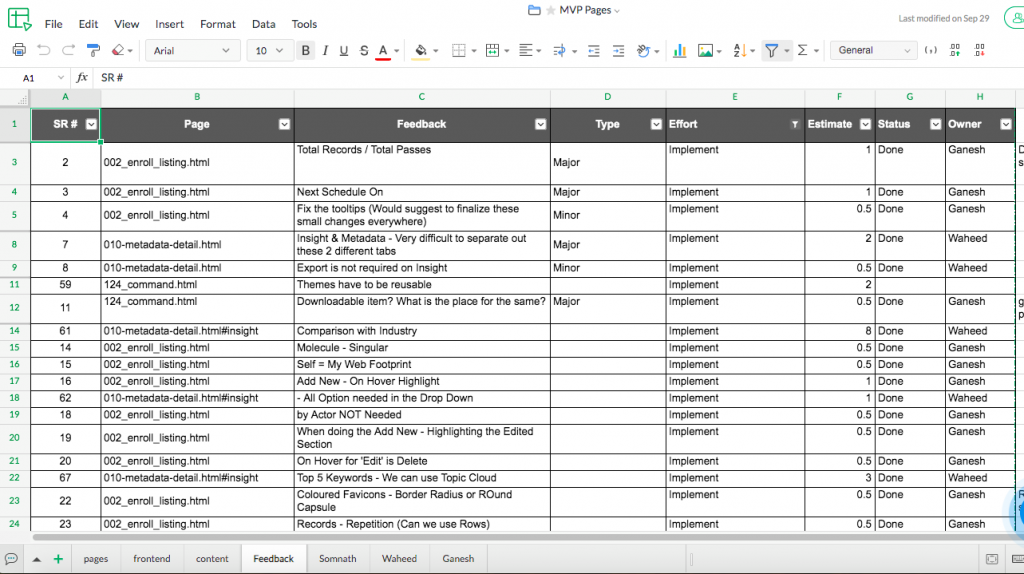
So let’s understand what is customer validation. So Steve Blank, essentially, is a person who has put together some literature on the customer development process. Some people call it the lean process.I think he has documented a lot of literature on www.steveblank.com. He has this thing called as the Customer Development Manifesto. So we wanted to do the same where we wanted to talk to the customers, show them what we have, and try to get their early feedback. Even before we write a single piece of code. They will never write a single piece of code, we get some sort of feedback, very, very lean way of doing things. And the only thing that we had on his website was some few clickable mock ups and a whole mathematical model from the data that we generate to the insight that we’re able to offer, end to end, so something as threadbare as that. We got it ready. And we are on our way to San Francisco.
San Francisco is a hub of a lot of tech companies. And the persona we were looking at from a company perspective. They were also over here. So we from India, we left, we went to US; landed in New York. From Newark, off we went to Raleigh, North Carolina. We have some work in Raleigh. And then we finished that work. Then we went to Indianapolis. And then from Indianapolis, we went to the San Francisco, and we are hopping flight from Minneapolis. So that’s how we reach San Francisco. And in San Francisco, we essentially had friends and family who helped us, you know, just to accommodate ourselves for the next seven days. And then we got started.
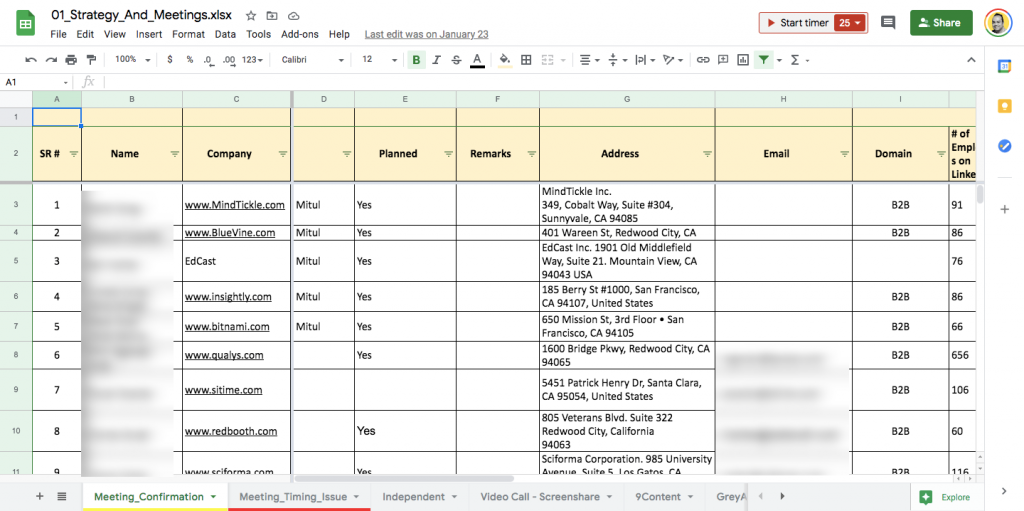
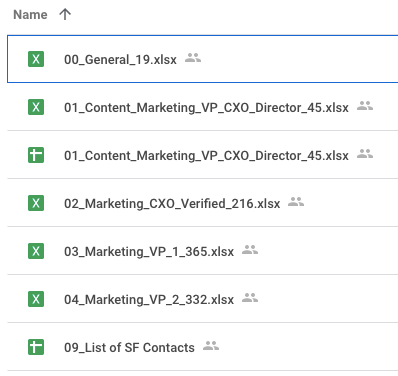
How did we get these meetings?
So the first thing that we put together a persona. Companies that are based in the Bay Area, San Francisco, and who have an employee strength of over 200 – This was our proxy for wallet size. The next is we looked at the designations. So designations which are VP, director, or CXO. If they are in the marketing side, or product side, more. So for these kinds of personas, we ran together some lists on LinkedIn; we downloaded these lists, using SalesTools, and other online tools. We could extract data from LinkedIn. It’s a fairly common knowledge of such tools exist. We did a cold outreach. The cold email was very simple. It was a no obligation free meeting that we needed. And we wanted feedback. So when we did that, and we did that to a fairly large universe of close to 1600 people, we were able to get 39 meetings. With all the scheduling, with all the geographic clustering, clubbing, we got 39 meetings. And then we did 33 meetings, we essentially set out and we went to the US. So massive Legion massive outreach, followed by geographically clubbing and clustering people on different dates and times. And that’s how the whole 39 meetings were at least scheduled. Now, once we actually landed, we started talking to people, there were some last-minute cancellations rescheduling, we could not be certain meetings, and hence we updated people. So we could materialize 33 out of these 39 meetings.

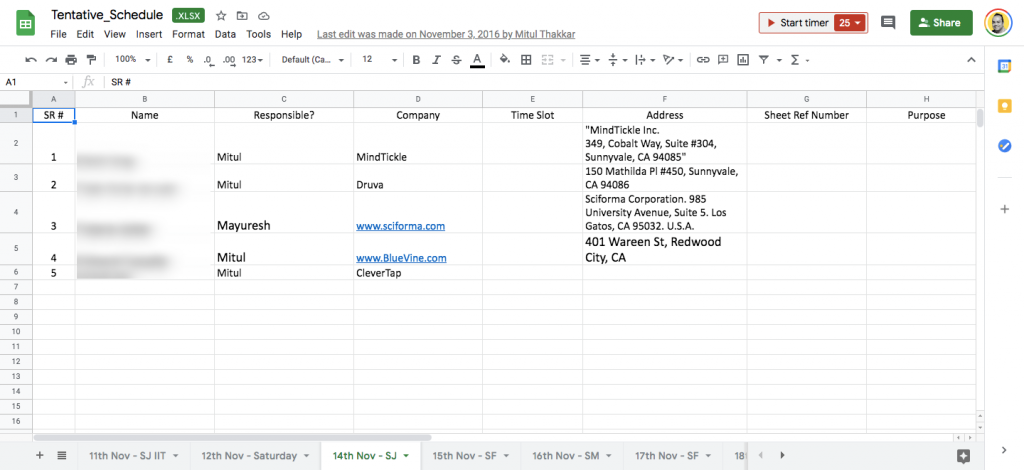
How did we validate the idea?
Now, the simplest thing that we did is that we essentially started top down gave a very clear picture of what kind of business problem that we are solving and asked a very simple question, you know, would you be essentially be paying for it, you think that this is your pain point. We had a very freewheeling kind of conversation, we definitely had a questionnaire or survey, which we wanted to run, which we wanted, you know, some feedback to having everything. But we essentially, when we started doing these meetings; day one, day two, we got the very clear, strong feeling that strongly structured questionnaires are not going to work. Open freewheeling conversations, letting people speak their mind; asking a very simple questions. We got tonnes of feedback.
Feedback where things like you know, marketers have no time do something that decreases their work. Here is the key operational things are done and dusted. Don’t focus on them. Focus on the cerebral intellectual recommendation stuff. That kind of thing. How are the recommendations? How is it different from SEO? Many people had questions. Listen, can you also give me like title first paragraph, and give me some sort of validation on top of it. And it has to impact the marketing, qualified lead and sales, qualified leads and everything. So lots and lots and lots of inputs that we got from this kind of process. We ended up documenting these things. When we did these things, when we documented these things in our Excel sheet, we essentially came up with close to, you know, 200 plus bullet points. And then we essentially sat down, we, you know, came up with a universal solution, we said that this is what we need to, you know, just look at things. And then we essentially got a very good input.
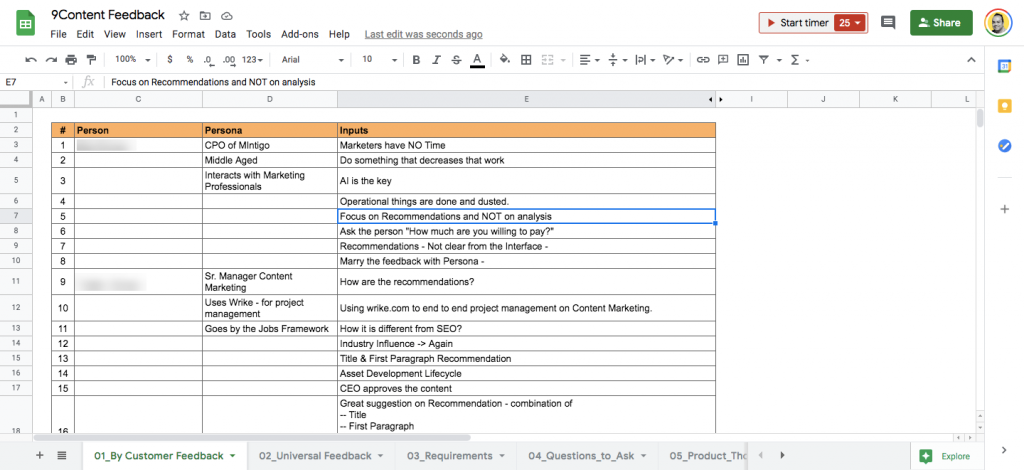

What products we have our hand, how can we make it narrower? How can we make it more specific, you cannot be both strategic and tactical market needs a more tactical tool, marketers get pitched two or three products every single day, they need depth in solutions? So, we came across certain solutions, certain feedback that came from that part. Now, once we got all this feedback, we sat down & consolidated it; we rewrote the requirements, we basically asked the questions for ourselves, we figured out global, someone in a different geography have the same problem, are we solving a problem that is big enough, all those kinds of things?
Decision Time
So we reflected on our solution or approach, you know, lessons from this trip. We came with a decision matrix where, you know, can we do it, and one of the key overarching decision lever was that the customer that you’re building this for, is in a different geography, you know, your India can be a Development Center where you’re building the product. From a cost perspective for the technology teams. But the product team, need to be based out of the customer hub. And somewhere whether we could take assume that kind of cost, risk, raise capital, whether we had the skills to build teams in the US; sustain it at that point in time.
So for multiple reasons, because I think we could not co-locate with the customer and customer driven customer supported development was not possible, that was the single most reason we decided to not take this thing forward.
Was it the right decision?
No.
In hindsight, I think here are a few things that I would do separately.
I would focus more on the go to market strategy regarding this product.
Carve out a SMALL subset of product which will create the right noise and deliver most value.
Build an organic roadmap for product, fund raise and clarity generation.
I was younger and wasn’t completely aware of possibility set,
We essentially chose to sunset over this product, but you never know we can build this product again.
Photo by KEHN HERMANO from Pexels
Join to get sneak peek into what's happening
I write about books, experiences, product, UX, EdTech, early stage growth, validation – mostly tech. Subscribe if these topics interest you. Once every 15 days emailer. I promise – No spam. (I am known for it otherwise) 😉




